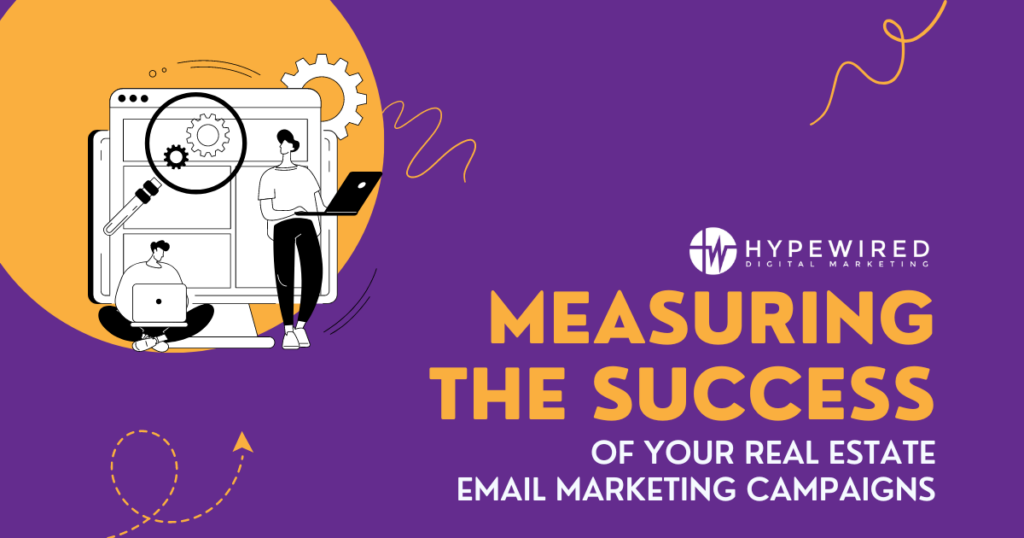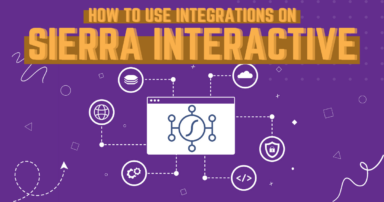Email marketing can be a great asset for real estate agents, but it’s essential to understand how to measure success so you can continue to refine your approach. Analyzing campaigns and optimizing them with the right automated email marketing tools can help you get more out of your efforts. In this blog post, we’ll discuss strategies for measuring email marketing success that will help you increase engagement and make sure every campaign has maximum impact.
Understanding Email Marketing Success
Real estate agents can use email marketing as an effective way to communicate with their intended demographic. To ensure maximum success, it’s important to understand the basics of email marketing and how to measure its performance.
Defining Your Goals:
Before launching an email campaign, it’s essential to have clear goals in mind. This could be anything from increasing website traffic to generating leads, but having a specific goal will help you track your progress more accurately. Additionally, setting measurable objectives like achieving X number of clicks or Y number of conversions can help you better evaluate the effectiveness of your campaigns over time.
Setting Benchmarks and Choosing Metrics:
Once you’ve set your goals, it’s important to establish benchmarks that will serve as indicators for success throughout your campaign and determine which metrics will help you measure progress. For example, if one of your goals is increasing website traffic by 10%, then tracking important email marketing metrics such as open rates and click-through rates can provide valuable insight.
Common email marketing metrics include:
- Open rate
- Click-through rate
- Conversion rate
- Bounce rate
- Subscribe rate/List growth rate
- Unsubscribe rate
- Sharing/forwarding rate
- Revenue generated/ROI
- Engagement over time
By understanding the basics of email marketing success, you can begin to measure and analyze your campaigns for better results. Analyzing email campaigns is an important step in optimizing performance and increasing ROI.
Analyzing Email Campaigns
Successful email campaigns require more than just sending out emails and hoping for the best. To maximize results, it’s important to measure key metrics such as open rates, click-through rates, conversion rates, and ROI.
Identifying what to track is the initial step in measuring email marketing success; this involves recognizing which metrics are most relevant. The open rate tells you how many people opened the email, while the click-through rate shows how many people clicked on links within the message. Conversion rate reveals what percentage of recipients took action after opening or clicking through, while ROI (return on investment) measures overall profitability based on cost versus revenue generated from an email campaign. Bounce rate tells you how many of your emails reach their intended destination rather than being caught in spam filters or similarly “bounced.”
That said, you shouldn’t measure just one email metric, as they’re quite interrelated. A low click-through rate might indicate you need to focus on more compelling anchor text, but if it’s paired with a low open rate, it might be better to work on compelling subject lines first. No one can click a link that they never see.
Examining Open Rates and Click-Through Rates:
Once you have identified which metrics to track, it’s time to start examining them in detail. Open rate is typically expressed as a percentage of total emails sent that were opened by at least one recipient—for example, “25% open rate” means 25% of all emails sent were opened by someone at least once.
Click-through rate is also expressed as a percentage, but this time it refers to the number of clicks compared with total opens—for instance, “10% CTR” would mean 10% of all opens resulted in someone clicking through from the message itself.
Evaluating Conversion Rates and ROI:
Opens and click-through rates get people onto your site, but conversion rate tells us what percentage of those who opened or clicked actually took action, like making a purchase or signing up for something. For example, if 100 people opened an email resulting in 20 sales, then that would be considered a 20% conversion rate (20/100 = 0.2 x 100 = 20%).
Finally, we need to look at ROI, or return on investment. This metric looks at costs associated with running an email campaign versus profits generated from conversions. If we spent $1,000 running our campaign but earned $2,000 worth of sales, then our ROI would be 200% ($2,000/$1,000=2).
Real estate agents can analyze their performance and optimize for maximum results by understanding the metrics used to measure email campaigns. With a few tweaks to subject lines and content personalization, it’s possible to test different variations of emails to improve overall performance.
Optimizing Your Email Campaigns for Maximum Results
Email campaigns can be a powerful tool for real estate agents to engage with leads and drive business growth, so continually optimizing them based on past performance should be an integral part of your marketing strategy. By employing a few key optimization tactics, real estate agents can maximize the success of their email campaigns and gain more leads.
Crafting Engaging Subject Lines and Content:
The subject line is the first thing readers see when they receive an email, so it needs to be compelling enough to get them interested in opening it. Consider using evocative words that generate emotional responses when creating your subject line, like “free” or “exclusive,” and personalize messages with names if possible. Try to craft content in your emails that’s both engaging and highly relevant for your intended readers; this will increase the odds that they’ll make it through the entire message.
Personalizing Messages for Target Audience Segments
Segmenting your target audience into different groups based on their interests or demographic information is also important. This allows you to tailor messages specifically for each group, increasing engagement rates and ensuring only those interested in what you offer receive your emails. People unsubscribe if the bulk of the emails you send aren’t relevant to them, so take the time to craft different messages for different parts of your audience. Moreover, unengaged subscribers aren’t helpful to you, as they’re highly unlikely to convert to leads and sales. Quality is far more important than quantity.
Testing Different Variations of Emails To Improve Performance
Finally, testing different variations of emails with A/B testing can be beneficial to determine which ones work best with certain audiences or at certain times of day/week/month etc. This process involves sending two versions of a message to different (but comparable) groups of recipients, then measuring which version performed better in terms of open rate or click-through rate.
A/B testing can refine virtually every aspect of an email campaign, from subject lines and image choices to the frequency of emails in drip campaigns. If one call to action gets a 10% click-through rate and another gets 5% or emails sent in the evening get higher open rates than during the day, for example, refine your approach accordingly to boost overall success.
By following these simple steps, real estate agents should find themselves well on their way toward optimizing their email campaigns for maximum results. With the right strategies in place, they can craft engaging subject lines and content that resonates with target audience segments, personalize messages for each group, and test different variations of emails to continually improve performance.
Leveraging Automation Tools to Streamline Your Processes
Leveraging automation tools is essential for streamlining your real estate marketing. Automating email delivery scheduling and timing ensures that emails are sent out at the most effective times to maximize open rates and, perhaps even more importantly, saves you time managing it yourself throughout the day. Setting up a drip campaign all at once to send automatically over weeks or months, creating autoresponders that activate when someone subscribes, linking social media accounts to auto-post new site content—there are many streamlining possibilities.
Speaking of social media accounts, integrating with other platforms is also key for gaining cross-channel insights into how campaigns perform across various channels such as social media, search engines, and email marketing lists. This helps agents understand where leads are coming from so they can focus their efforts on the most successful sources while improving upon those that aren’t yielding results. Incorporating third-party analytics can give agents further information to track success and guide future strategies for optimizing campaigns.
Leveraging automation tools in real estate email marketing can allow agents to send out tailored messages more easily based on recipient segments. For example, they could create an automated workflow that sends luxury property buyers personalized messages highlighting new listings within this category—something manual processes may struggle with due to limited resources or time constraints.
FAQs About Measuring Email Marketing Success
Which email marketing metric is the most relevant?
The most relevant metric depends on which factor of your campaign you’re evaluating for improvement.
- Whether subscribers are seeing your emails: bounce rate
- Subject line effectiveness: open rate
- Audience engagement: click-through rate
- Call to action effectiveness: conversion rate
- Return on investment: revenue generated
However, because many aspects of email marketing have a linear cause and effect, earlier steps in the process can have knock-on effects on the metrics of later steps.
What’s a good open rate for email marketing?
Average email open rates, click-through rates, and other metrics can vary by industry by 20% or more, so be sure you’re comparing apples to apples when evaluating your campaign’s performance. That said, most sources point to 25–30% open rates being about average in real estate.
You should also measure your campaigns’ effectiveness compared to each other. For example, is this week’s campaign getting a higher click-through rate than last week’s?
Make Sure Your Email Marketing Measures Up
Real estate agents can ensure their email campaigns are as successful as possible by understanding and analyzing key metrics like open rate, click-through rate, and conversion rate. By continually evaluating and optimizing your approach to real estate email marketing, you can achieve your goals and reach new heights.

 February 23, 2023
February 23, 2023




